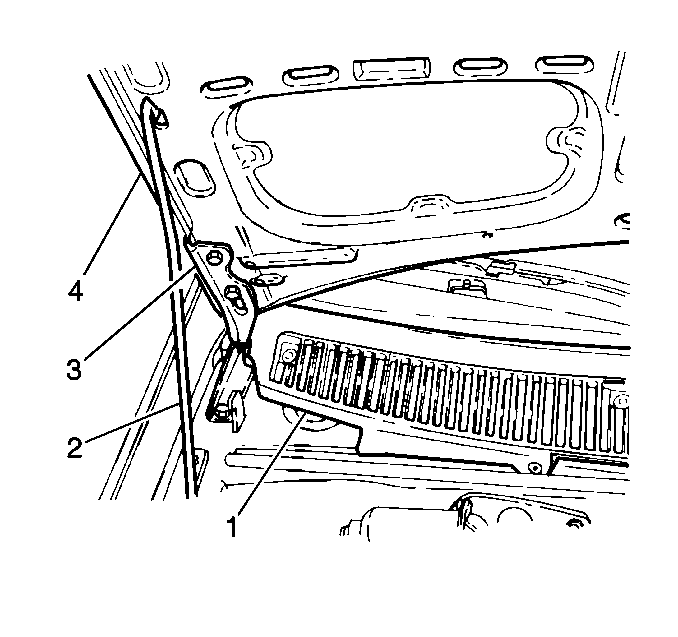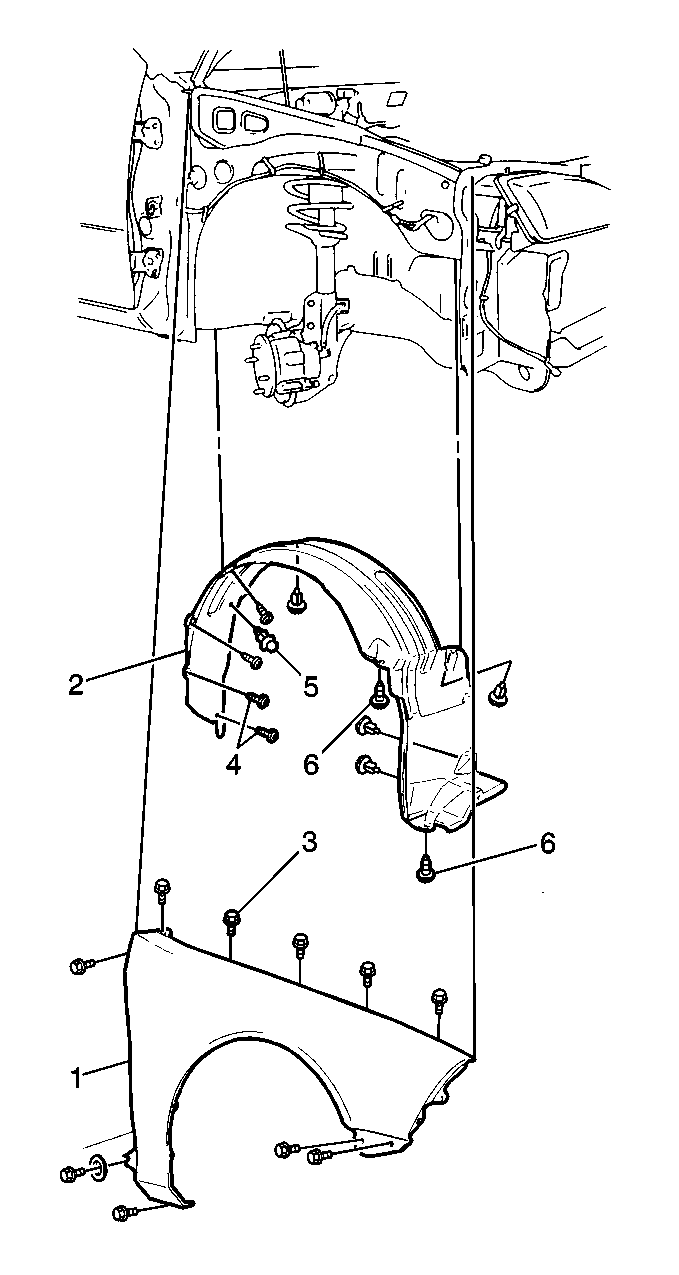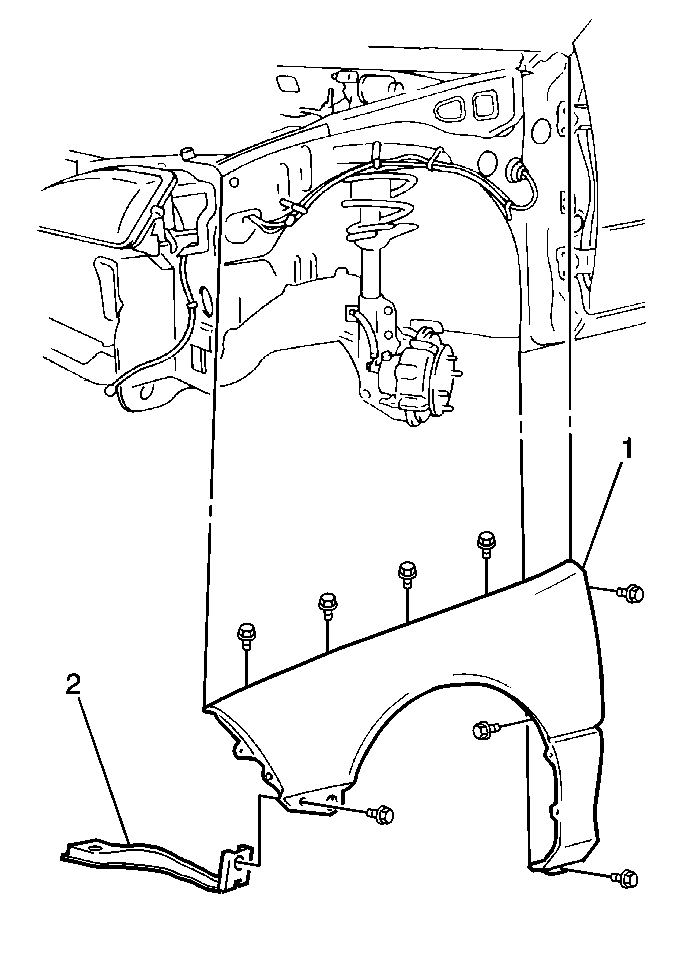Removal Procedure
Caution: Unless directed otherwise, the ignition and start switch must be in the OFF or LOCK position, and all electrical loads must be OFF before servicing
any electrical component. Disconnect the negative battery cable to prevent an electrical spark should a tool or equipment come in contact with an exposed electrical terminal. Failure to follow these precautions may result in personal injury and/or damage to
the vehicle or its components.
- Disconnect
the negative (-) battery cable.
- Remove 2 screws from the parking lamp.
- Slide the parking lamp away from the fender.
- Disconnect the bulb socket.

- Remove the following components:
| • | 2 hood rear weatherstrip clips |
| • | 2 cowl vent grille retainer clips |
- Position the following components away. This will allow for the
removal of the front fender mounting bolt:
| • | The hood rear weatherstrip |
| • | The cowl vent grille (1) |
- Raise and suitably support the vehicle. Refer to
Lifting and Jacking the Vehicle
in General Information.
- Remove the tire and wheel assembly. Refer to
Wheel Removal
in Tires and Wheels.

Notice: When removing body panels, apply tape to corners of panel and adjacent
surfaces to help prevent paint damage.
- Remove the following components from the vehicle:
- Remove the 2 fender retaining bolts at the door pillar.
- Remove the 1 inner fender retaining bolt.
- Remove the 4 upper fender retaining bolts (3).
- Remove the 1 support nut that secures the fender to the
bumper fascia.

- Remove the 1 retaining
bolt from the fender brace (2).
- Slide the fender (1) off of the bumper side slider.
- Remove the fender (1) from the vehicle.
Installation Procedure

Notice: Anti-corrosion compounds have been applied to the interior surfaces
of some metal panels to provide rust resistance. When servicing these panels
in areas on which this material has been disturbed, or when installing new
panels, avoid corrosion damage by coating with anti-corrosion compound.
Notice: Use the correct fastener in the correct location. Replacement fasteners
must be the correct part number for that application. Fasteners requiring
replacement or fasteners requiring the use of thread locking compound or sealant
are identified in the service procedure. Do not use paints, lubricants, or
corrosion inhibitors on fasteners or fastener joint surfaces unless specified.
These coatings affect fastener torque and joint clamping force and may damage
the fastener. Use the correct tightening sequence and specifications when
installing fasteners in order to avoid damage to parts and systems.
- Slide the fender (1)
onto the bumper side slider. Position the fender (1) in place. Secure
the fender brace (2) to the vehicle with 1 retaining bolt.
Tighten
Tighten the fender brace-to-vehicle retaining bolt to 20 N·m
(15 lb ft).
- Install 1 support nut that secures the fender to the bumper
fascia.
Tighten
Tighten the fender-to-bumper fascia support nut to 20 N·m
(15 lb ft).

- Secure the fender (1)
to the vehicle with the following bolts:
| • | 1 inner fender retaining bolt |
| • | 4 upper fender retaining bolts (3) |
| • | 2 fender retaining bolts at the door pillar |
Tighten
Tighten the fender retaining bolts to 20 N·m (15 lb ft).
- Install the wheelhousing (2). Secure the wheelhousing with
the following components:
- Install the tire and wheel assembly. Refer to
Wheel Installation
in Tires and Wheels.
- Lower the vehicle.

- Install the cowl vent
grille (1) to the vehicle. Secure the grille with the retaining clips.
- Install the rear weatherstrip to the vehicle. Secure the weatherstrip
with the retaining clips.
- Install the parking lamp bulb socket to the parking lamp.
- Install the parking lamp to the fender. Secure the lamp with 2 screws.
- Connect the negative (-) battery cable.






